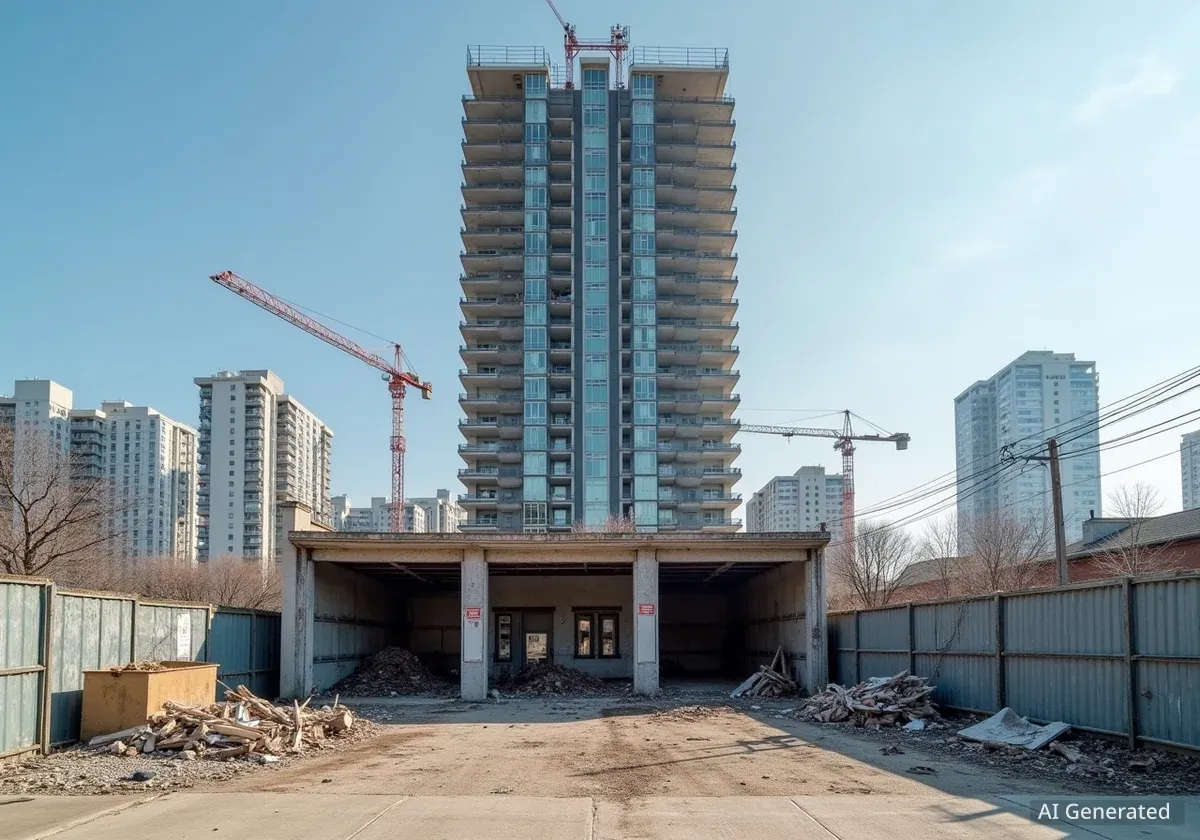The economic measures enacted during the COVID-19 pandemic may have permanently damaged the dream of homeownership for millions of Americans, according to a prominent real estate executive. Sean Dobson, CEO of The Amherst Group, stated that the country has likely made housing unaffordable for an entire generation, a problem that could take over a decade to resolve.
Speaking at the ResiDay conference in New York City, Dobson warned that current housing affordability levels are worse than they were at the peak of the 2006 housing bubble. He attributed the crisis to a combination of aggressive government stimulus, monetary policy, and restrictive lending practices that have pushed home prices far beyond the reach of average incomes.
Key Takeaways
- A top real estate CEO warns that post-pandemic economic policies have created a generational housing affordability crisis.
- Current affordability is reportedly worse than the 2006 pre-crash peak, with housing costs consuming nearly 43% of median income.
- Restoring 2019 affordability levels would require a 35% drop in home prices or a 55% rise in household income.
- Strict credit standards since the 2008 financial crisis are excluding a large portion of potential first-time homebuyers.
- Institutional landlords are filling the gap by providing rental homes in desirable neighborhoods for those locked out of ownership.
The Anatomy of an Affordability Crisis
The core of the issue lies in the stark imbalance between home prices, interest rates, and wages. According to Dobson, the current situation is unprecedented in modern history. The economic response to the pandemic, which included trillions in government spending and historically low interest rates, was intended to prevent a recession but had the unintended consequence of inflating asset prices, particularly real estate.
“We think the unfortunate part … really the cost of economic policy response to COVID is that we’ve probably made housing unaffordable for a whole generation of Americans,” Dobson said during his conference appearance. He estimates it could take 10 to 15 years of sustained income growth for affordability to return to levels considered normal before 2006.
By the Numbers
Data from The Amherst Group illustrates the severity of the problem. For a typical FHA-insured mortgage, the total monthly payment—including principal, interest, taxes, and insurance (PITI)—now consumes approximately 42.9% of the median household income. This figure surpasses the 41.5% recorded at the height of the 2006 housing bubble and is significantly above the historical average range of 25% to 35%.
Dobson emphasized that there are no easy solutions. To revert to 2019 affordability levels, the market would need to see one of three dramatic shifts: a 35.3% reduction in home prices, a 4.6% drop in interest rates, or a 55% increase in household income. He noted that none of these scenarios are plausible on their own, suggesting a long, slow realignment is the only likely path forward.
The Credit Conundrum
Beyond high prices, a major barrier to homeownership is the difficulty of securing a mortgage. Regulations like the Dodd-Frank Act, implemented after the 2008 financial crisis, were designed to prevent a repeat of risky lending. However, Dobson argues these rules have also systematically excluded a large segment of the population from the housing market.
“Subprime mortgages were serving millions of Americans to get them to buy homes … when Dodd-Frank was passed, there was a maximum credit risk allowed on the table. That only serves the top 25% of the consumer base,” Dobson explained.
He clarified that the term "subprime" simply referred to borrowers with below-average credit scores, not necessarily bad loans. The current system, he said, is unforgiving. A person can see their FICO score drop from a prime 745 to a subprime 645 after just two missed payments. Rebuilding that credit score to prime status can take as long as five years, effectively locking them out of the mortgage market.
This credit squeeze leaves millions of families who desire homeownership with no option but to rent indefinitely. The existing financial framework, Dobson stated, was built for a different era and has not adapted to modern economic realities.
The Rise of Institutional Rentals
The growing difficulty of buying a home has created a vacuum in the market—one that large-scale institutional landlords like The Amherst Group's subsidiary, Main Street Renewal, are now filling. Dobson addressed criticism that such firms crowd out individual homebuyers, arguing instead that they provide a crucial service for those left behind by the traditional mortgage industry.
“Rental is going to have to become a part of the solution,” Dobson asserted, framing it not just as a business opportunity but as a necessity for the country's housing stability. He explained that his company's residents are often families with modest incomes and credit scores around 650—customers the current mortgage system is not designed to serve.
Who Are the New Renters?
The median annual income for new residents in Amherst properties is approximately $108,000. These are not low-income households, but rather middle-class families who aspire to live in suburban homes with good schools and community amenities but are unable to secure a loan to purchase one.
Dobson's position is that institutional landlords offer a stable housing solution by financing and maintaining homes at scale. They provide access to the benefits of single-family home living for a demographic that has been effectively sidelined by both government policy and private lenders.
Looking Ahead: No Easy Fixes
When it comes to solving the crisis, Dobson expressed skepticism about quick fixes from Washington. While he advocates for expanding credit access, he acknowledged that such proposals are often politically unpopular. The path forward, in his view, involves a gradual and potentially painful process of economic realignment over many years.
Adding to the uncertainty, Dobson also voiced concerns about the future impact of artificial intelligence on the job market. He noted that many of his residents work in service and administrative roles that could be vulnerable to automation, potentially creating further economic strain for a generation already struggling with housing costs.
The message from the conference was clear: the American dream of homeownership is more challenging than ever, and the aftershocks of recent economic policies will continue to shape the housing landscape for years to come.





